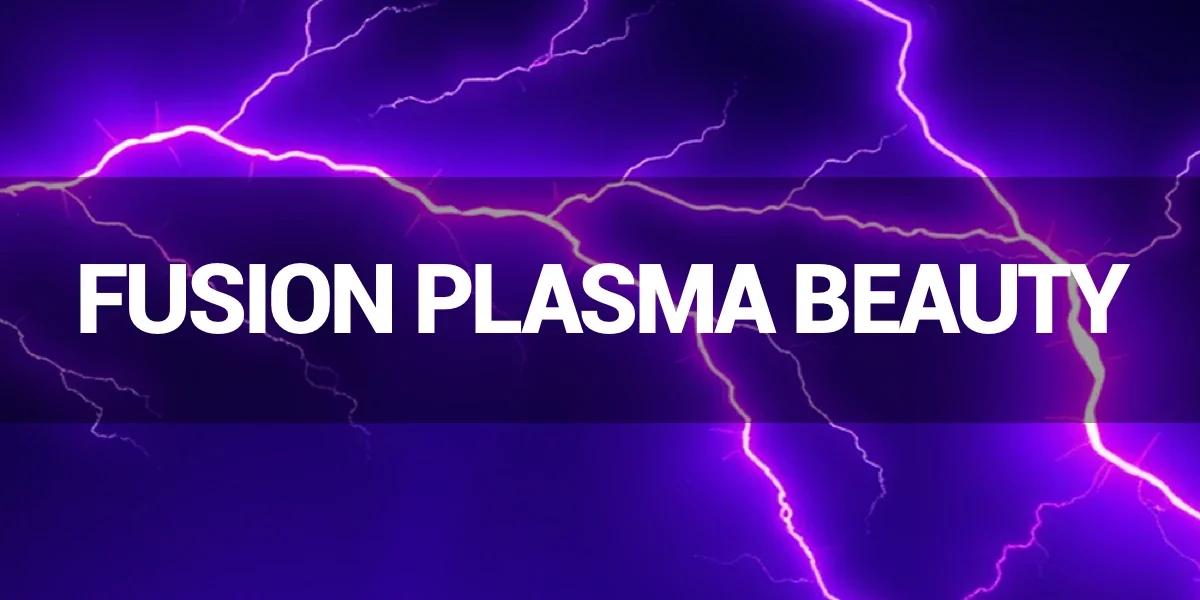Blog
Unlock Radiant Skin: What Is The Science Behind Fusion Plasma

In the ever-evolving world of aesthetic technology, the fusion plasma stands out as a particularly intriguing innovation. This treatment promises a multitude of benefits, from skin rejuvenation to acne reduction, all powered by the seemingly futuristic technology of plasma. But what exactly is plasma, and how does it work its magic on our skin?
This article delves into the technical underpinnings of the fusion plasma, exploring the science behind cold and thermal plasma and their effects on skin at a cellular level. Prepare to uncover the physics and chemistry that make this beauty machine a potential game-changer.
The Genesis of Plasma Technology
Plasma, often dubbed the fourth state of matter, isn’t a new discovery. Its applications span various fields, from industrial manufacturing to sterilization. The use of plasma in medicine, however, is a more recent development. Early research focused on its antimicrobial properties and wound-healing potential. As technology advanced, scientists began exploring the possibilities of using controlled plasma energy for cosmetic purposes. This led to the development of plasma-based skincare devices, with the fusion plasma representing a sophisticated evolution of this technology.
The Core of the Fusion Plasma
The Fusion Plasma distinguishes itself by employing both cold and thermal plasma energies. Understanding the differences between these two forms of plasma is crucial to grasping the treatment’s efficacy.
- Cold Plasma: Generated at near-room temperature, cold plasma is a non-equilibrium plasma. This means that the electrons within the plasma have a much higher temperature than the heavier ions and neutral particles. This allows for chemical reactions to occur without causing significant thermal damage to the treated tissue. In skincare, cold plasma generates reactive oxygen species (ROS) and reactive nitrogen species (RNS). These species have antimicrobial effects, sterilizing the skin surface and reducing inflammation. They also stimulate cellular signaling pathways involved in wound healing and tissue regeneration.
- Warm Plasma: In contrast, thermal plasma is characterized by a state of thermal equilibrium, where all particles (electrons, ions, and neutral particles) have approximately the same temperature. This results in a significantly higher overall temperature compared to cold plasma. In the fusion plasma facial, warm plasma is used to deliver controlled heat to the deeper layers of the skin. This thermal energy causes collagen fibers to contract, leading to immediate skin tightening. It also triggers a cascade of events that stimulate long-term collagen production.
How Plasma Reshapes Skin from Within
The true power of the fusion plasma machine lies in its ability to influence cellular behavior. At the cellular level, plasma energy initiates a series of complex processes that contribute to skin rejuvenation.
- Collagen Synthesis: Both cold and thermal plasma stimulate fibroblasts, the cells responsible for collagen production. Thermal plasma’s heat-induced collagen contraction provides an immediate tightening effect, while both types of plasma promote long-term collagen synthesis, leading to improved skin elasticity and reduced wrinkles.
- Cell Activation: Plasma energy can activate various cellular signaling pathways involved in cell proliferation, differentiation, and migration. This promotes the regeneration of skin cells and the repair of damaged tissue.
- Improved Microcirculation: Plasma can improve blood flow to the skin, enhancing the delivery of oxygen and nutrients to skin cells. This improved microcirculation contributes to a healthier, more vibrant complexion.
- Antimicrobial Action: As mentioned earlier, the reactive species generated by cold plasma effectively eliminate acne-causing bacteria and reduce inflammation, making the fusion plasma facial machine a valuable treatment for acne-prone skin.
Scientific Basis Behind Fusion Plasma
The effectiveness and safety of plasma technology in skincare are supported by a growing body of scientific research. Studies have demonstrated the ability of plasma to stimulate collagen production, reduce wrinkles, improve skin elasticity, and treat acne. While more research is needed to fully understand the long-term effects of the fusion plasma treatment, the existing evidence suggests that it is a promising technology for skin rejuvenation and overall skin health. (Cite relevant studies here – e.g., Journal of Cosmetic Dermatology, etc.)
Conclusion
The Fusion Plasma represents a significant advancement in non-invasive skincare. By harnessing the power of both cold and warm plasma, this treatment offers a comprehensive approach to skin rejuvenation, addressing a wide range of concerns at the cellular level. While further research is always beneficial, the current scientific understanding of plasma technology provides a solid foundation for its use in cosmetic applications. As technology continues to evolve, we can expect even more sophisticated and effective plasma-based skincare solutions to emerge.
Call to Action
- Schedule a consultation: Contact Tingmay professional team to learn more about the Fusion Plasma and determine if it’s right for you.
- Learn more: Visit our website to explore the key benefits behind the fusion plasma.
- Share your experience: Have you tried the fusion plasma treatment? Share your experience in the comments below!














